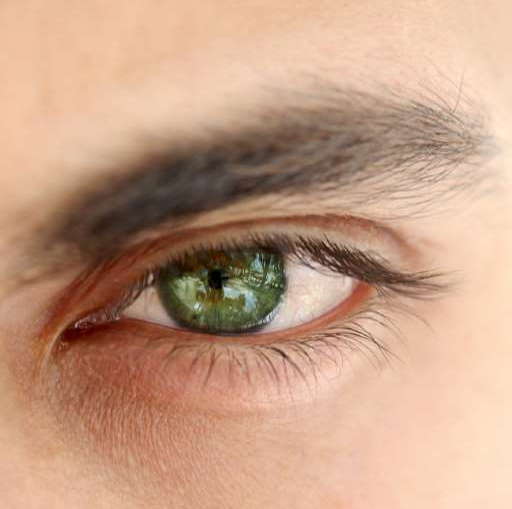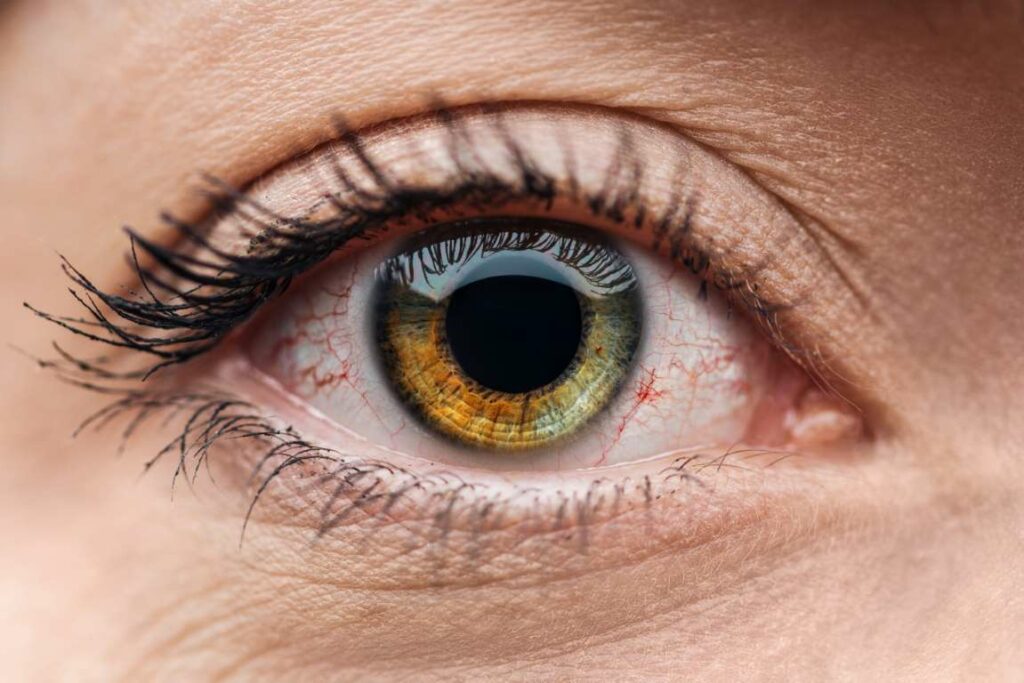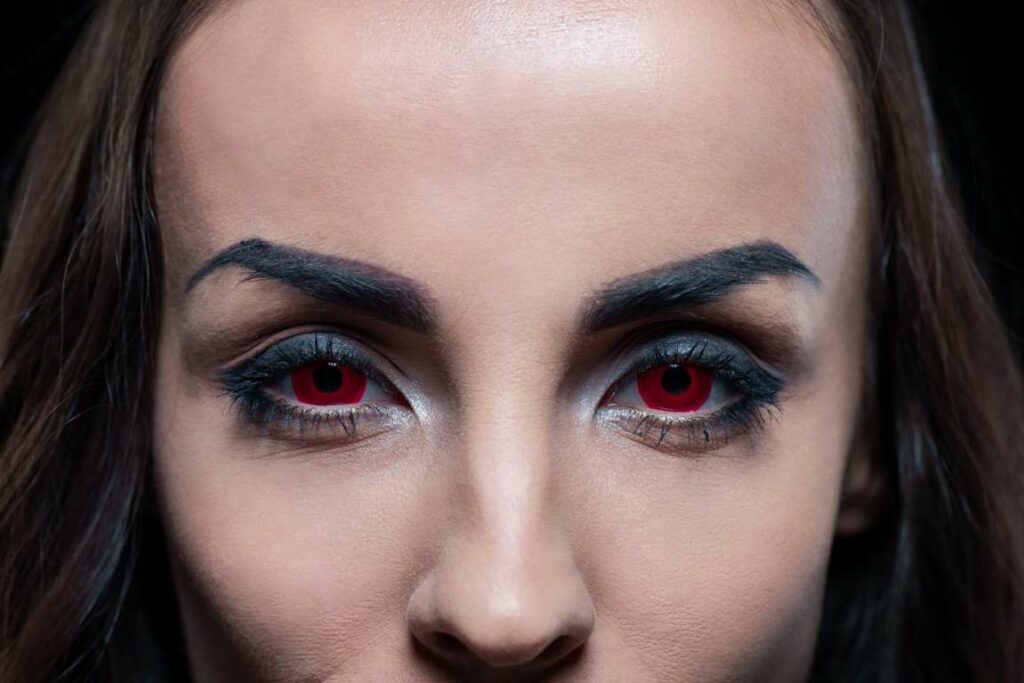When it comes to eye colors, most people probably think of blue, brown or green. But there are actually a variety of eye colors that are much less common. This blog post is about the rarest eye color in the world and together we will find out why it is so special.
What you find here!
What influencing factors determine our eye color
Eye color is mainly determined by the amount of melanin in the eye color tissue. Melanin is the pigment responsible for the color of the skin, hair and eyes. The more melanin present in the eyes, the darker the eyes become.


Some factors that may affect the amount of melanin in the eye color tissue include:
- Genetics: Eye color is largely genetically determined and is determined by the combination of genes from both parents.
- Age: Eye color can change throughout life. Eye color develops in the first months of life and may continue to change throughout life.
- Environmental factors: Some environmental factors such as UV radiation, smoking, and alcohol consumption can affect the amount of melanin in the eye color tissue and diminish the eye color.
- Health Conditions: Some health conditions such as eye inflammation, eye disease, and certain medications can affect the amount of melanin in the eye color tissue and change the eye color.
Behind blue eyes | Blue as the rarest eye color or is it?
I’m sure everyone already knows that brown eyes are the most common eye color in the world. About 80% of our world population has brown eyes and even if many don’t believe it, blue eyes are the second most common eye color.
Surprisingly, blue eyes are considered the most common eye color in Europe and the United States. In Asia, however, brown eyes are much more common. Similar to how people have different skin colors depending on their geographic location on Earth (e.g., people with darker skin living closer to the equator), genetic differences can also affect the eye color of certain groups of people within a particular region or country.



Rare, rare - green
Green eyes are the rarest eye color of all eye colors and occur in only about 2-5% of the world’s population. Green eyes are genetic mutations in the OCA2 gene, which produces melanin, a chemical that gives color to skin, hair and eyes.
Rarest eye color amber?
Amber eyes are a rare eye color, often described as “golden” or “honey” in color. They are a combination of brown and gold colors. They are caused by a high concentration of melanin and lipochromes in the eye color tissue. Amber eyes can occur in people of any skin color, but are most common in people with fair skin and dark hair. Amber eyes are most commonly found in certain parts of Europe and Asia, such as Northern and Eastern Europe, the Middle East, and Central Asia.
There are no accurate estimates of how many people worldwide have amber eyes. It depends on several factors how eye color is determined and there are many nuances of eye colors that make it difficult to determine an exact number. However, it is roughly estimated that only 1-2% of the world’s population has amber eyes.


Fascination gray eyes
Did you know that gray is also the rarest eye color? However, in most cases gray eyes cannot be distinguished from blue eyes, so they are added together in statistics. Gray eyes are so rare because of their special pigmentation. Unlike brown or blue eyes, which are colored by melanin pigments, the color in gray eyes is created by light refraction. This means that the color of the eye can change depending on the light conditions and environment. Gray eyes can vary from light gray to dark gray depending on the light conditions and therefore can even sometimes look green or blue.
It is estimated that about 8% of the world’s population has gray eyes. The distribution of gray eyes is quite different in different parts of the world. Blue and gray eyes, for example, are very common in Northern Europe, while they are a rarity in Africa, South America and Asia. The Icelandic population has about 75% blue or gray eyes, closely followed by other Scandinavian countries.
Red eye color - does it really exist?
They really do exist: people with red eyes. However, red eyes are most often associated with medical conditions such as albinism.
Albinism is a genetic condition that results in a deficiency of melanin. Melanin is the pigment responsible for the color of the skin, hair and eyes. People with albinism have a reduced amount of melanin in their eyes, which results in the eye having little or no melanin to absorb light.
Without enough melanin to absorb light, the light is reflected by blood vessels in the back of the eye and therefore the eye appears red. This redness can vary from mild to severe and can sometimes be blue or purple.
Albinism can also lead to other eye problems, such as nystagmus (involuntary eye movements), photophobia (sensitivity to light), and astigmatism (deformation of the cornea). People with albinism also often have vision problems caused by a reduced ability of the eyes to focus light.
It is important to note that not everyone with albinism has red eyes and that the color of eyes can vary in people with albinism. Some people with albinism may have blue or gray eyes, while others may have red eyes. We would also like to add that people with albinism have no health risks and they do not differ from the rest of the world population.


Can you change your eye color?
Many people would rather prefer the rarest eye color instead of one that occurs more often. Because of this, medicine has developed to the point where it is now possible to achieve this with the help of eye surgery. However, these procedures are extremely complex and highly controversial, so they are not recommended.
Methods which are used to change the eye color are:
- Iris Implant: An iris implant is a thin silicone disk that is placed in the anterior chamber of the eye through an incision at the edge of the cornea to change the natural eye color. Compared to corneal tattooing, the results of iris implantation look more natural.
- Corneal tattooing: Laser treatment can be used to permanently change eye color. This is done by creating a ring-shaped tunnel in the cornea into which a dye is injected, resulting in a change in the natural color of the eye. The technical term for this is “cosmetic annular keratopigmentation”, however it is also known as “corneal tattooing”.
Even if such operations are offered, just about every doctor will advise you against them. Such a procedure does not count as a medical necessity and is purely cosmetic. No health insurance will cover such operations and the risks or dangers of permanent damage are very high.



What does your eye color say about your personality
Look into my eyes and tell me what you see! Everyone has heard the saying “the eyes are the mirror of the soul” and for this reason people with different eye colors are associated with certain characteristics or personalities.
For example, people with green eyes are often described as mysterious and inscrutable, while people with blue eyes are often described as insecure and sensitive. People with brown eyes are often described as down-to-earth and trustworthy. People with gray eyes are described as intelligent and independent, but in principle, no matter what color eyes you have, you are unique!
Conclusion about the rarest eye color
There are a variety of eye colors, some occur more often and others less often. The differences and frequency are often due to the different regions and countries. Ultimately, however, each and every one of us is unique regardless of what color our eyes are, and that’s what makes this world so fascinating.
PS: matching the theme of beautiful eyes are also the eyewear trends that await us this year. Or maybe you’re interested in eco glasses? All info about eco glasses are just a click away 😉.




